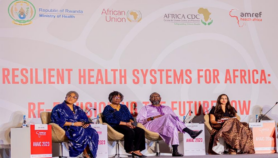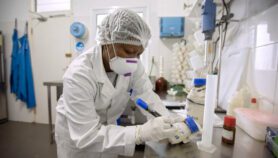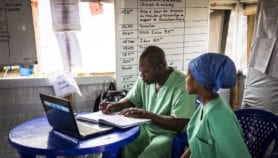By: Hartmann
Send to a friend
The details you provide on this page will not be used to send unsolicited email, and will not be sold to a 3rd party. See privacy policy.
CGIAR reforms take research decisions too far away, says Hartmann, director-general of the International Institute of Tropical Agriculture (IITA).
This year (2009) marks the end of an era in agricultural research. Not only has Nobel Prize-winning agronomist Norman Borlaug died, but the network of research centres with which he was closely associated is in the throes of radical reform (see A revolution to combat world hunger).
The Consultative Group for International Agricultural Research (CGIAR), a networking organisation founded in the 1970s to channel funds into agricultural research, was a creative idea that has also proved effective.
The group has given rise to 13 World Food Prize winners and many technological developments. Its network of centres has grown from four to 15 (including an intergovernmental body), with more than 60 contributing countries.
As concerns about rising food demands grow, CGIAR has responded to its long-felt need to change how it operates. In the early 2000s, it created a Science Council to prioritise agricultural research across the developing world and fit its collective research into a neat structure. This having failed, CGIAR this year launched a more ambitious and comprehensive reform agenda.
The reform aims to provide a strategic focus and make research more efficient and relevant, boosting its impact. CGIAR also hopes to simplify its governance, enhance decentralised decision-making and provide new funding options for programmes — with plans to double its income from the current US$530 million annual budget for all 15 centres, to US$1 billion.
Noble goals all, but whether the reform will deliver them remains to be seen.
Big science
For example, one big change is new ‘mega-programmes’, involving multiple centres. These will be financed through a central fund, which should prove useful — especially to major donors that have neither the time nor resources to allocate and monitor their funds across 15 separate centres.
But the danger of such programmes is that they are so remote that they stand little chance of making a real impact. In practice, they usually mean that just a handful of people — mostly men wearing nice silk ties sitting in equally nice hotels — decide what the poor in the developing world need.
The strength of the existing structure is that centre scientists are closely involved in defining research agendas. And these people are ‘in the trenches’ every day with national colleagues, farmers and national governments. It is a little scary that in the new CGIAR, decisions about what research to fund will be made far from these interactions.
Equally worrying are the plans for the central fund to use a contracted consortium to implement the mega-programmes. This proposed group includes no scientists, so will, in turn, have to contract individual centres — or other institutes — to do the actual research. One wonders why the fund cannot contract the researchers themselves.
Veering off course?
Particularly baffling amidst the ongoing reform is that ‘policy’ is now defined as a "strategic objective", alongside increasing food and protecting the environment. But policy cannot be an end in itself — it is just a tool, like biotechnology, for achieving the broader goals.
Other aspects of what is proposed are similarly hard to understand. For example, the new CGIAR encourages donors to reduce their bilateral funding to centres, in favour of paying into the new central fund. In fact, bilateral funding strengthens centres and tends to make their research more relevant because it is often designed with local needs in mind. It also makes centres more stable.
It is true that donors who provide CGIAR’s core funds have had legitimate concerns that they were subsiding bilaterally funded projects that did not have enough money to cover the full overhead costs of their work. But with the new strict requirements that bilateral projects be funded at full cost, such concerns have been addressed.
Silver linings
The reform isn’t all bad news. The costly AGM is to be replaced by donor-only meetings every two years.
And if the reformed CGIAR can get donors to accept common monitoring and evaluation, it will take enormous pressure off the centres, where staff struggle to fulfil the innumerable requirements of CGIAR’s Science Council, the secretariat, and numerous donors.
Looking forward, it might help to see this reform as the first phase of a two part reform. In some ways, it will be a success. For example, it will create the central funding instrument some donors need. It will also reduce the number of centres in the network — something donors have been trying to do for more than 15 years.
But the reform is unlikely to make the impact it’s looking for. No centrally-determined CGIAR research programme has yet delivered on impact — all the group’s successes have come from centre-driven research, for example biocontrol of diseases in Africa or the success of rice in Asia.
When this reality sinks in, part two of the CGIAR reform will be needed, if only to recapture the strength of having the (remaining) centres and their partners set research agendas.
The real silver lining in the cloud of reform is that CGIAR’s intent to address hunger and poverty is unshaken, if not stronger. There is hope that in time, the group will correct its weaknesses. And if the reform succeeds in doubling funds for research on food and the environment, then all the mega-structures, mega-programmes and mega-bureaucracies it is creating would be tolerable.
Hartmann is director-general of IITA, an institute supported by the CGIAR and other OECD countries.
This article was updated 12 October 2009.













